This year felt much easier than last year, we now have the delusion of knowing what we are doing and we knew Wiggers would take good care of us.
It’s interesting how our stress level changes as we learn more. Thinking back to when we pulled out the boat last year we were super nervous and unsure of what to do. We spent at least a month prior to haul out researching and fretting around what needed to be done.
This year it felt so much easier and things seemed much simpler. We did a little bit of prep in Cobourg but kept most of the gear on the boat for our trip to Wiggers.
- drained and cleaned fuel filters
- checked oil and transmission fluid
- pumped out
- emptied most of our water tanks
- quick scrub of what we could get at of the hull and rudder
We spent the night in Cobourg and the next morning had a beautiful sail to Wiggers Custom Yachts, with a little bit of a scare at the end. After our crappy dock and some time to argue about who was wrong, we set to work.
Starting with the anchor locker we pulled the anchor and laid out the rode to dry.
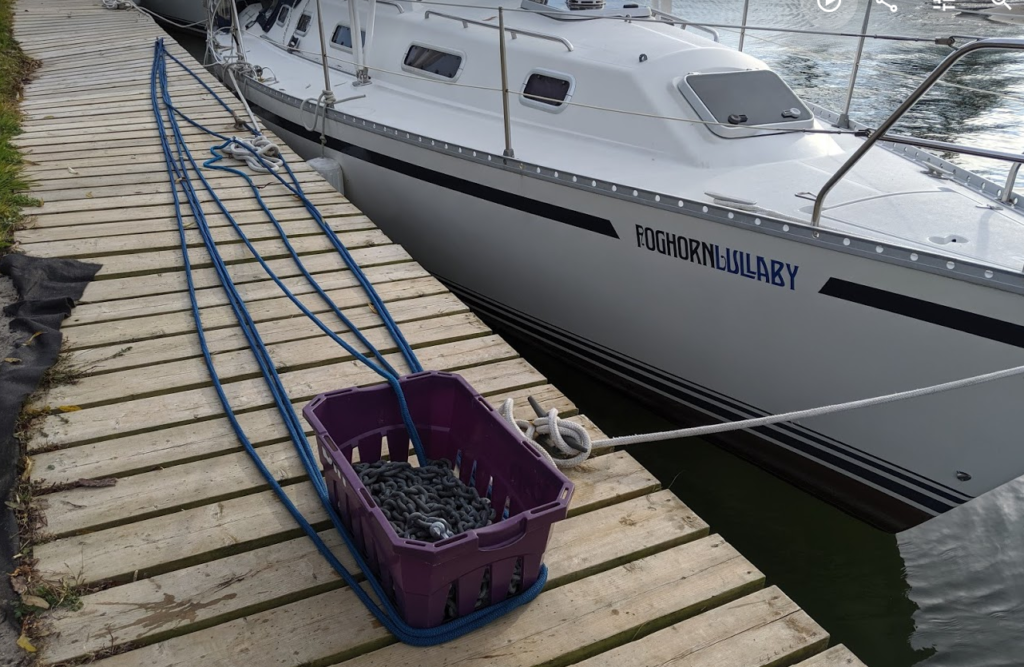
A little nervous about removing the sails since the wind was gusting. Main sail went smoothly but when we unfurled the genoa we discovered two tears that we never noticed before. Just another thing to add to the list for the winter, once we figure out how to do it!
Removing the boom took a few steps, I forgot how much you need to take it apart to remove it from the mast.
Since we are stepping the mast again, Lori got to work on the lines, pulling them out and wrapping them up around the mast.
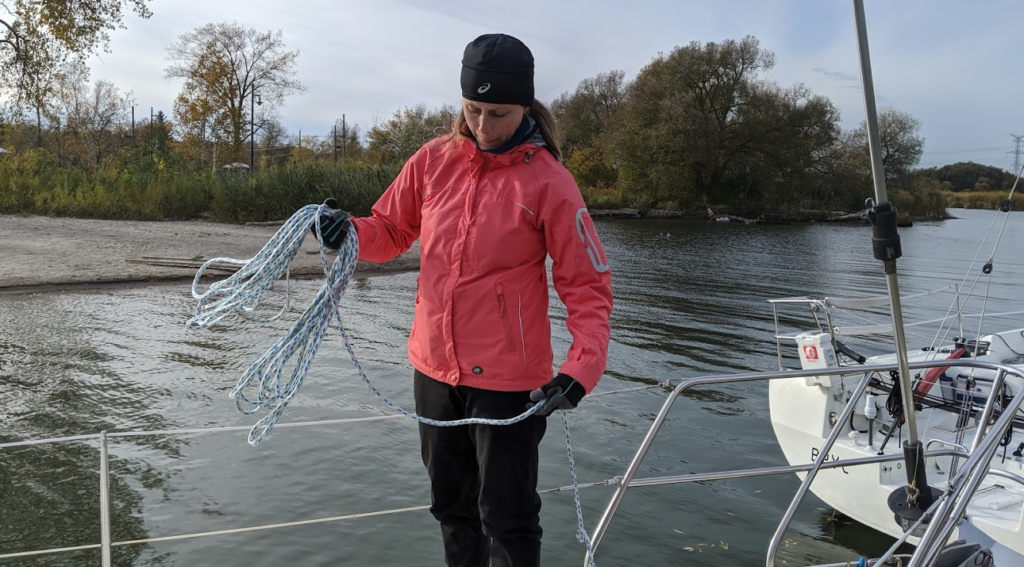
Look at that nicely organized stack of lines on the mast!
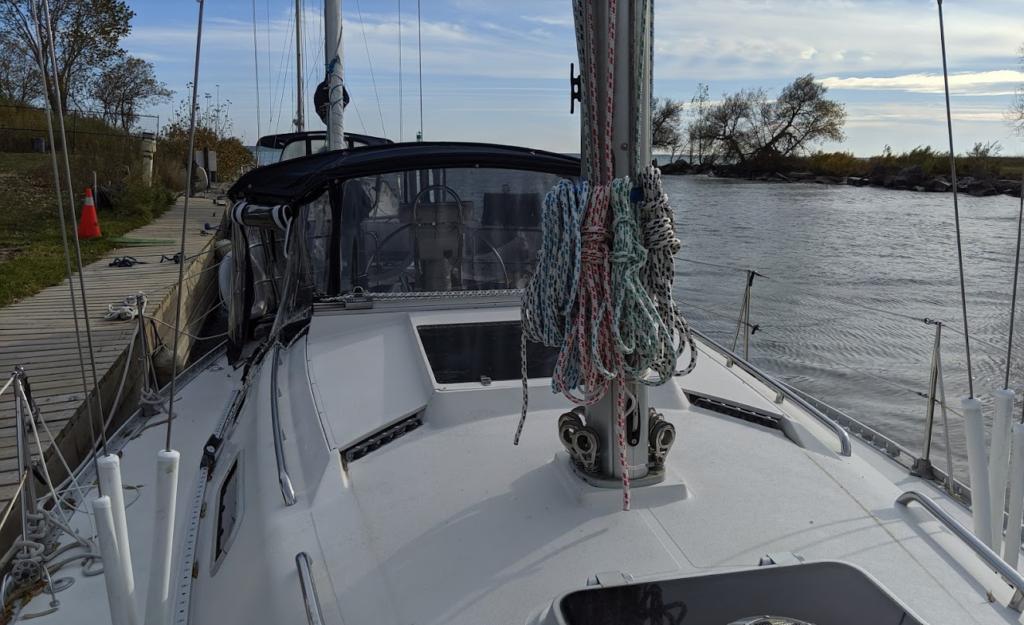
Pulled all of the electronics off the binnacle and covered with a plastic bag. Detached all of the wires running up the mast, taped them together to make them easier to pull.
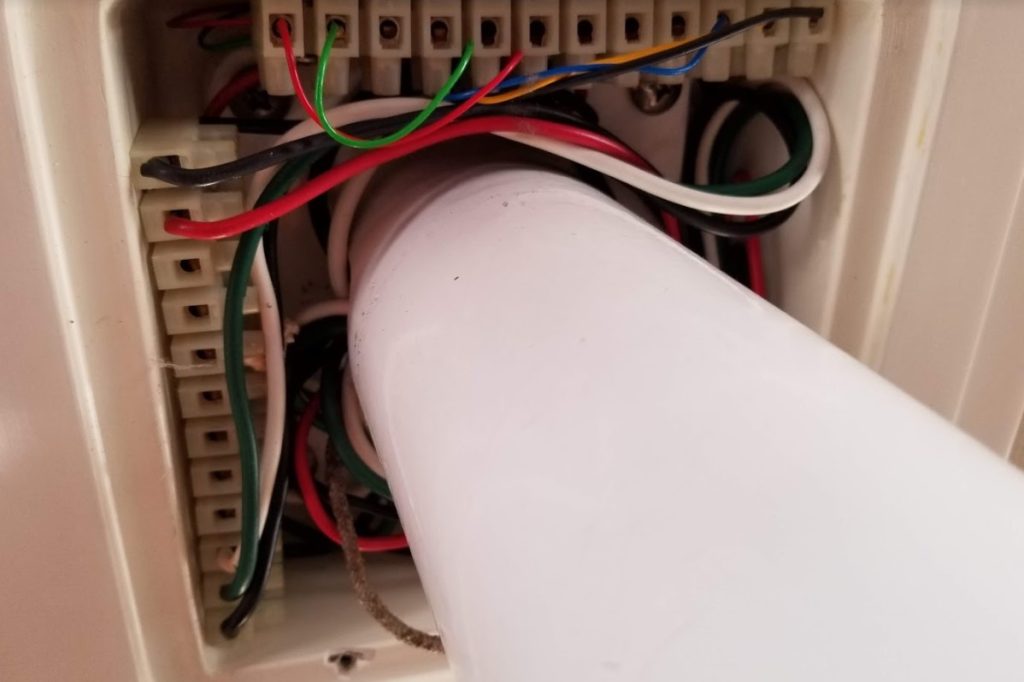
Removed the dinghy, motor, davit lines and all the enclosure canvas. She’s now looking bare.
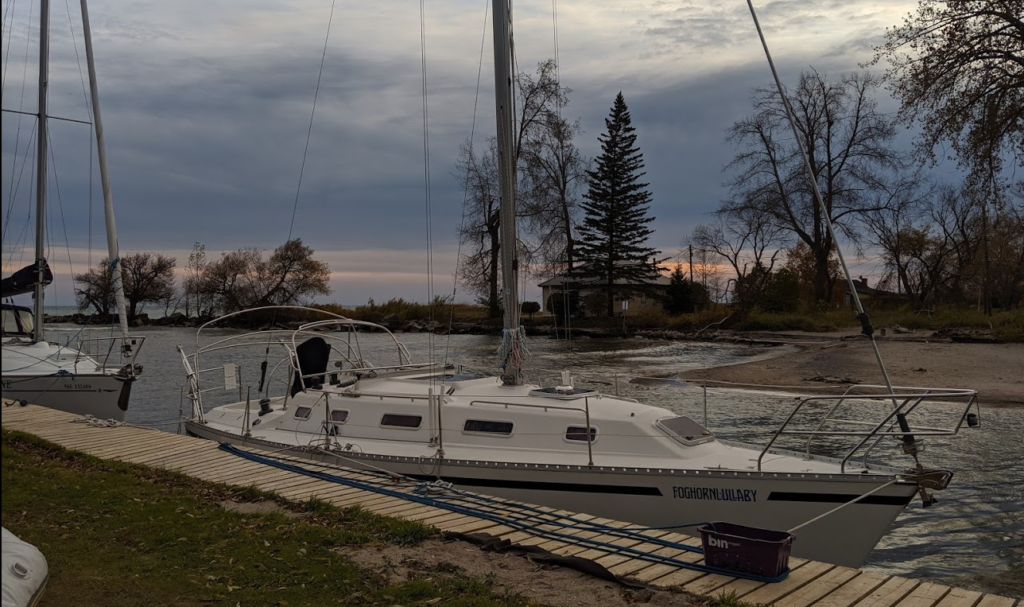
We were happy with our progress and called it a night. Warmed up some curry for dinner and had a beer, or two, to celebrate our productive day.
A wet morning
We woke up with the rain coming down. Good thing I put out our anchor rode to dry last night. Now you can see why I wasn’t worried about removing anything out of the boat in Cobourg, we rented a van in Bowmanville to take all our stuff home. We had tons of room for our gear.
We had a quick chat with the crew at Wiggers and it looked like the wind and rain will postpone our lift out.
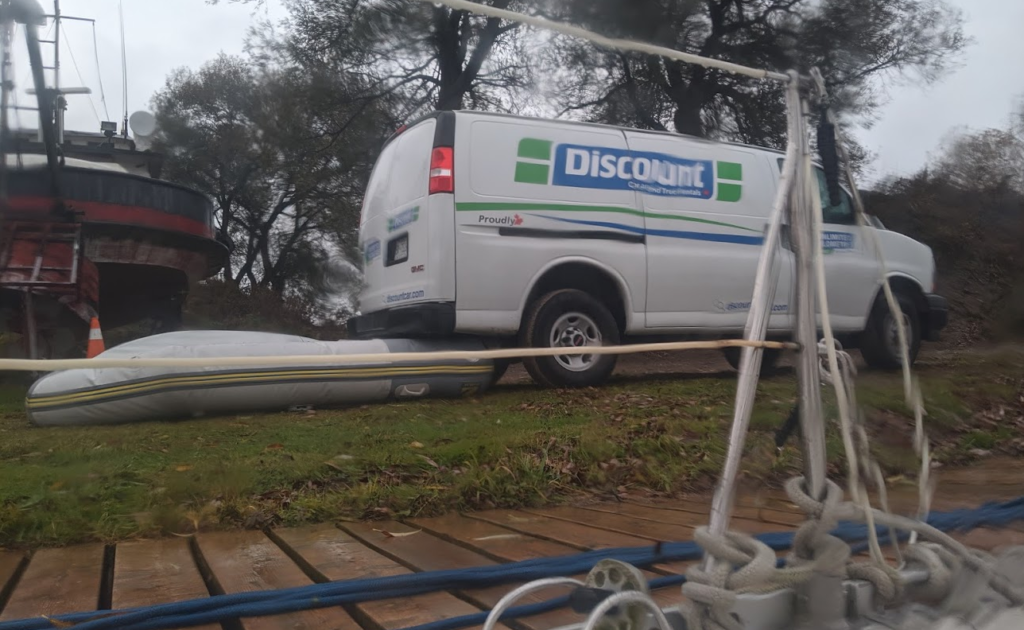
Here’s a few pics from us unloading the day before. Just as an FYI, a CS34 boom and spinnaker pole can fit within a rental van (just barely). But notice we had to give up the passenger seat to do this.
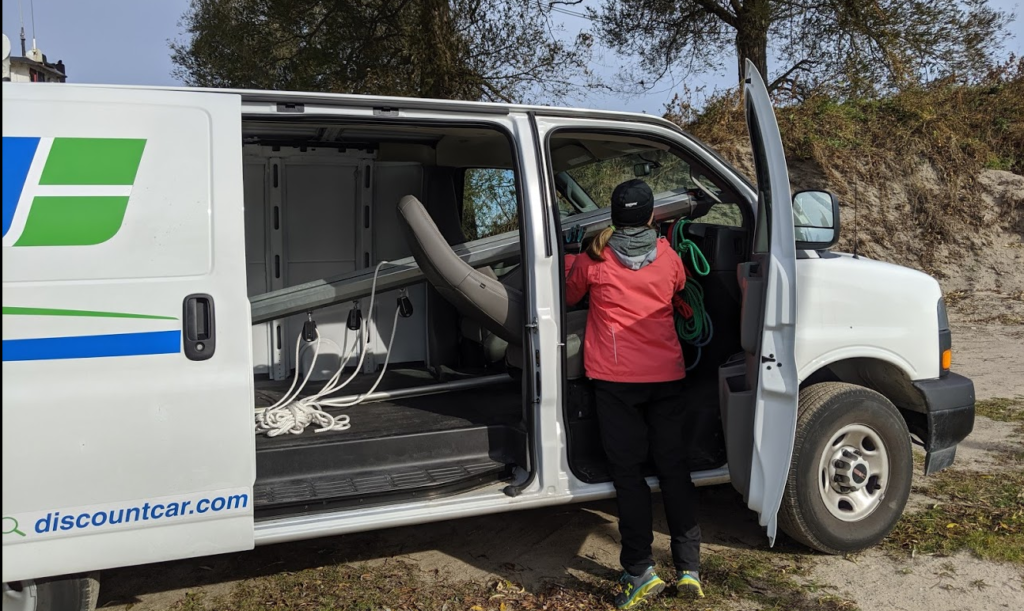
The spinnaker pole is going to possibly become a winter project. I would like to modify this to become a longer, adjustable length, whisker pole. Also wanted to take the boom home to store in our basement so we wouldn’t have to worry about the lines being outside over the winter. It’s too complicated inside the boom to remove them. See Isomat boom maintenance – putting it back together if you want to see what it looks like inside.
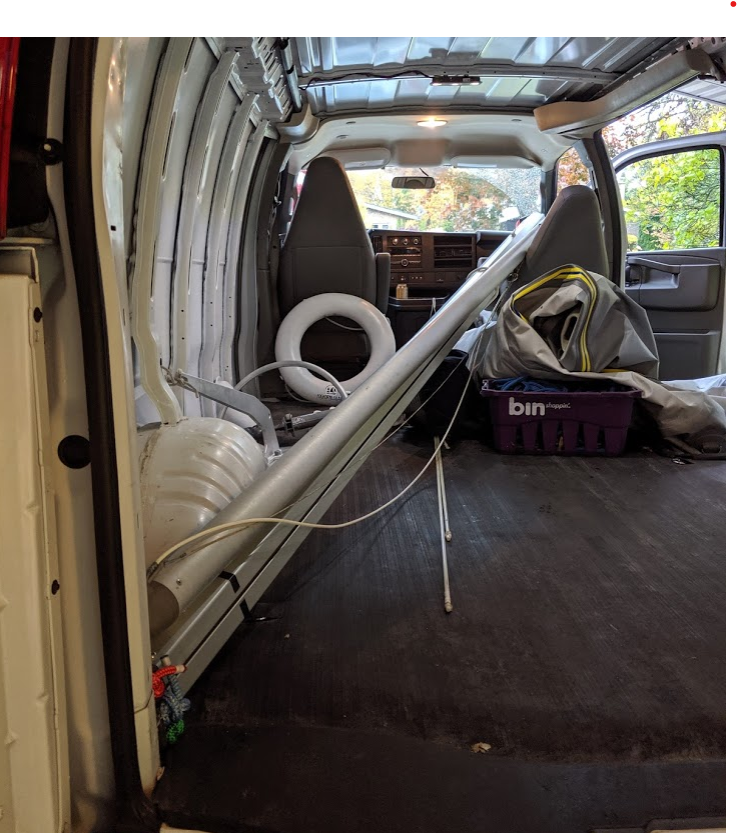
The morning was spent clearing out all the gear and cushions. Emptied the lazarettes and removed the propane tanks. We like to remove as much as we can, leaving the boat bare.
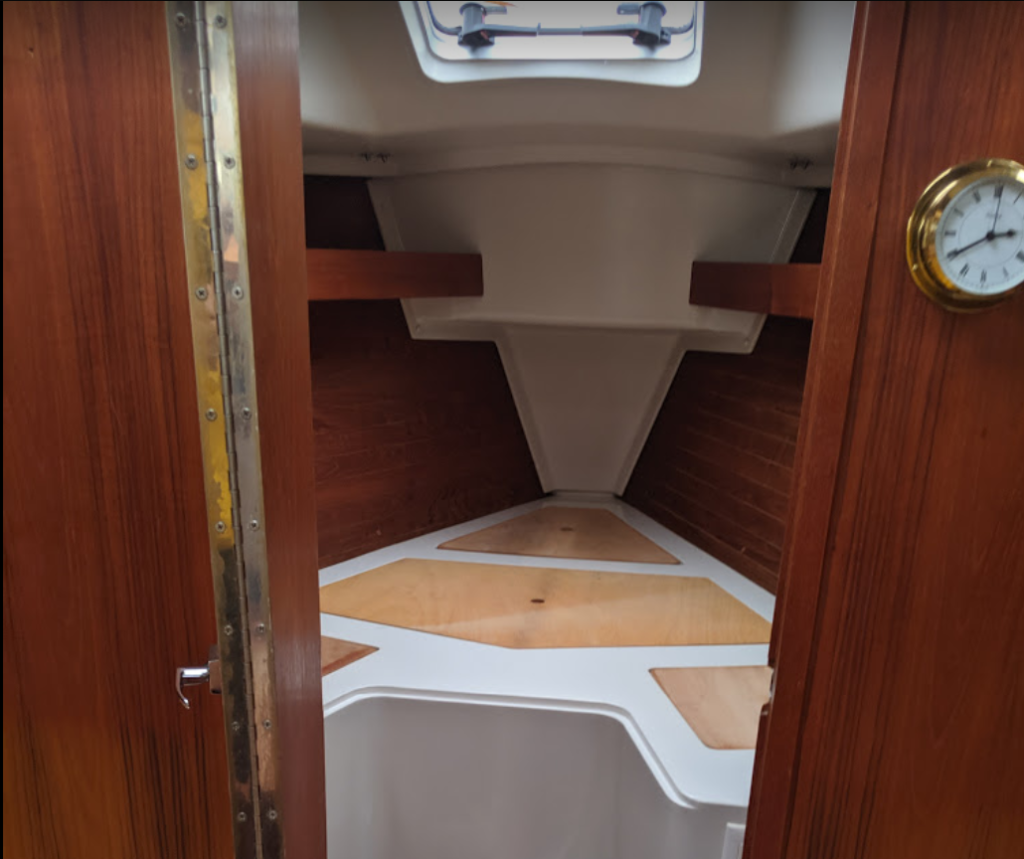
Glad we had lots of room in the van. I wasn’t very strategic in how it was packed. But it all fit!
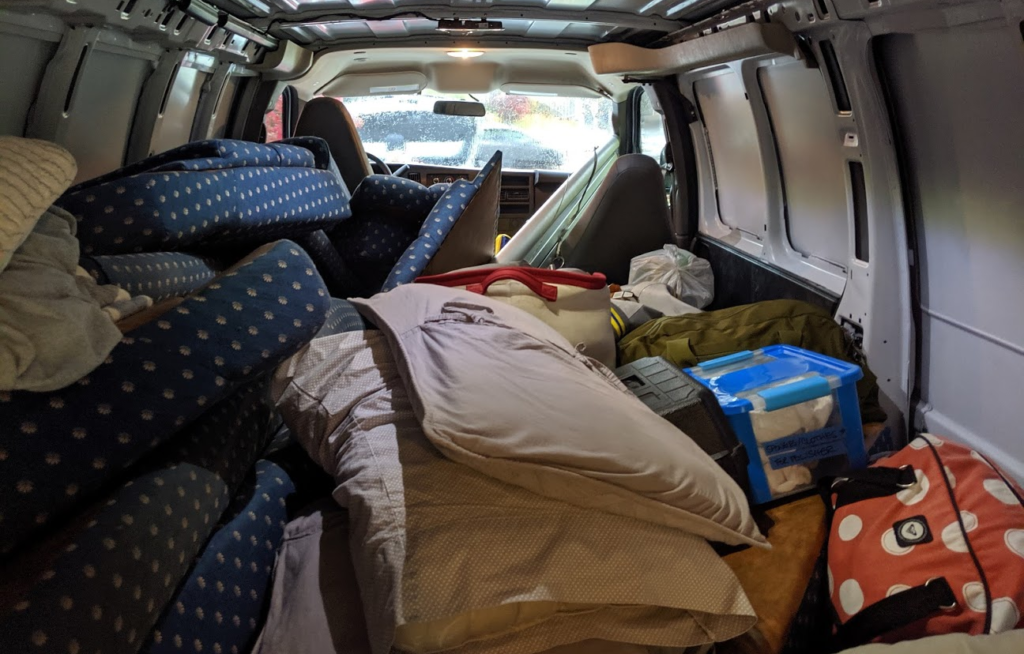
Drove back home and unloaded all the gear into our basement, yes our basement is a unorganized mess again. Drove back to Bowmanville to drop off the van and found out that lift out wasn’t going to happen. So we headed back home for the day.
Haul out process
We didn’t get a chance to see it this year, Wiggers hauled the boat when we were back at work. If you haven’t seen this process before it’s fun to watch. Here’s the videos from last year.
First step is to remove the mast. A large crane is used to hold the mast as the shrouds and stays are removed. The mast is then put onto a trolley and wheeled to it’s resting spot for the winter.
Second step is to position large slings under the boat and lift her up out of the water.
Third step is to lift the boat over her steel cradle (dark blue steel box tubing with three carpeted pads on each side), which is now on a separate trailer with hydraulic lifts (light blue), and line it up and rest on the cradle with the majority of the weight being held by the keel.
The bottom is quickly pressure washed to get rid of most of the growth. And then the boat is moved on the trailer to a spot in the yard. The trailer lowers the cradle down onto the ground and then brought back to move another boat.
Cleaning up the canvas enclosure
Time to clean up and put away the full enclosure. Even with spider ban on the lines we still find lots of spiders nesting in all the crevices in our bimini.
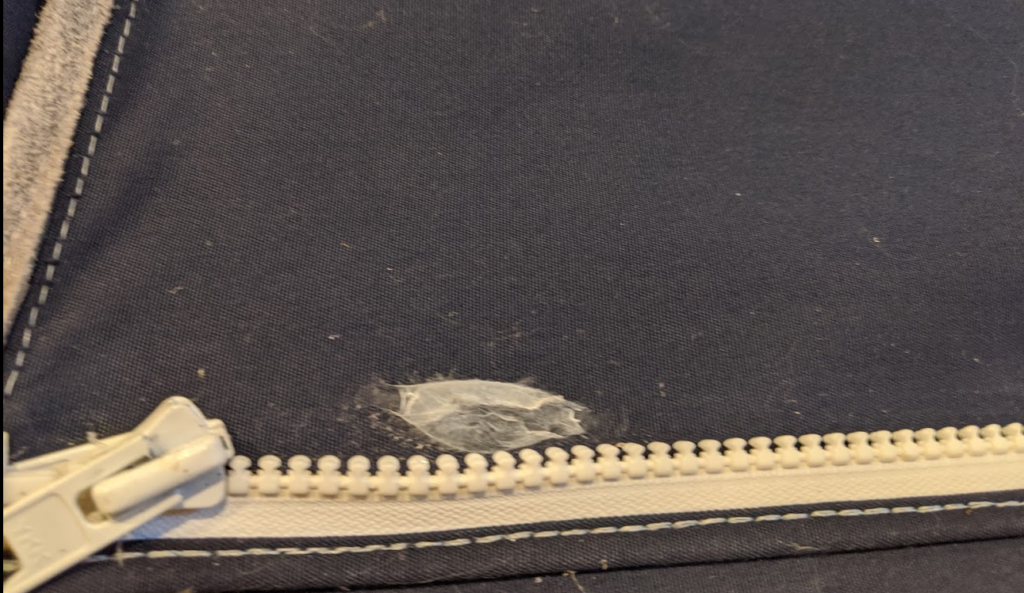
This attachment for our vacuum is awesome for scrubbing off all the spider webs and grit.
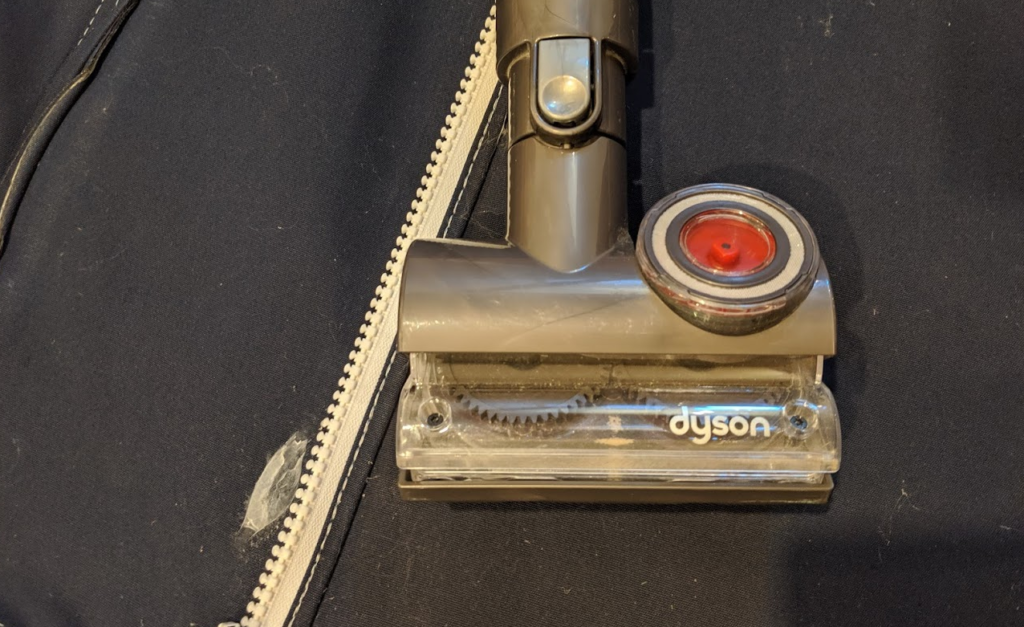
Here’s Lori’s ingenious idea. The entire enclosure rolls up into a nice package that we can store for the winter. In the center is a sonotube, normally used as a form for concrete pilings.
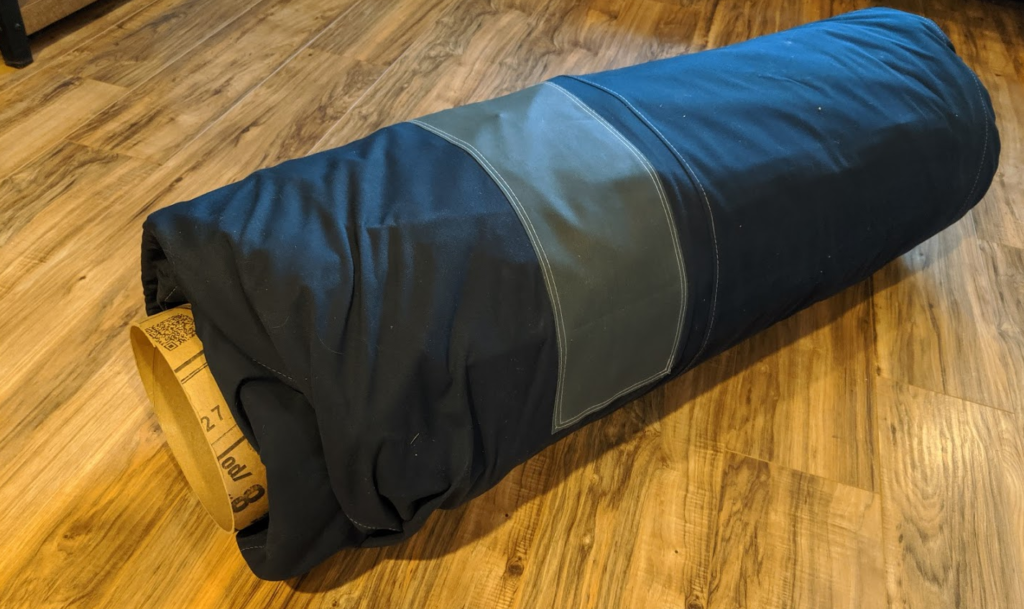
Back to the boat
It wasn’t until over a week later that we finally found some time to get back to the boat after she had been lifted out. The systems were all winterized by Wiggers but the sudden snow fall caught us by surprise and we needed to clean things up to ensure things were sealed up since the cover wasn’t ready to put on yet.
Here she is in her new spot in the yard. We are a bit closer to the water hose but farther away from electrical.
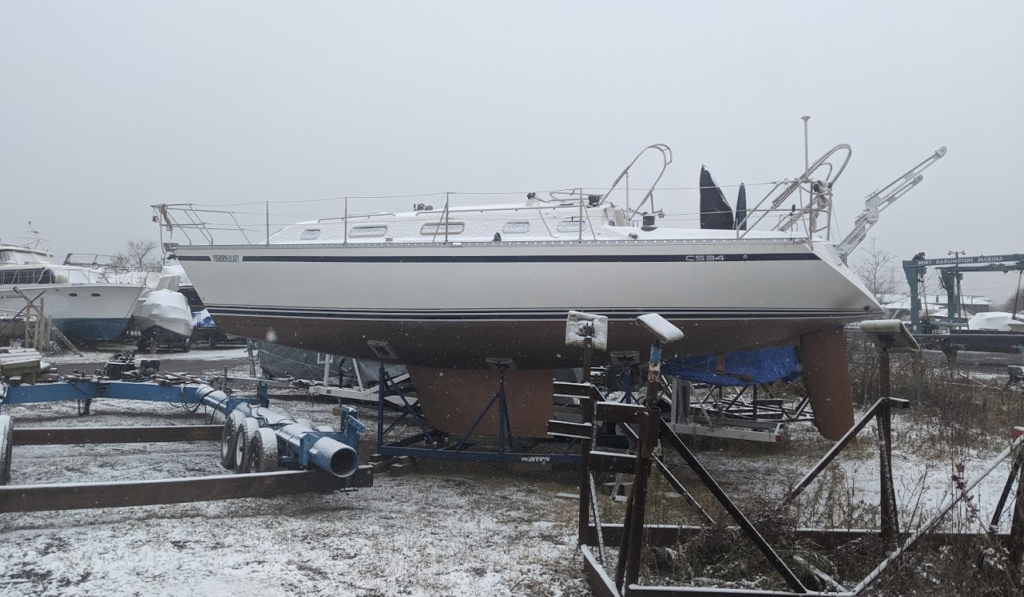
On our trip from Cobourg to Wiggers I noticed a slight wobble in the steering when we got over 5 knots. I was worried something was coming loose with the rudder. Checked the rudder on the cradle and everything is solid. I’m thinking/hoping it was being caused by a bunch of growth that we couldn’t reach with our brush.
And… just realized the obvious, the dock lines are still on the boat.
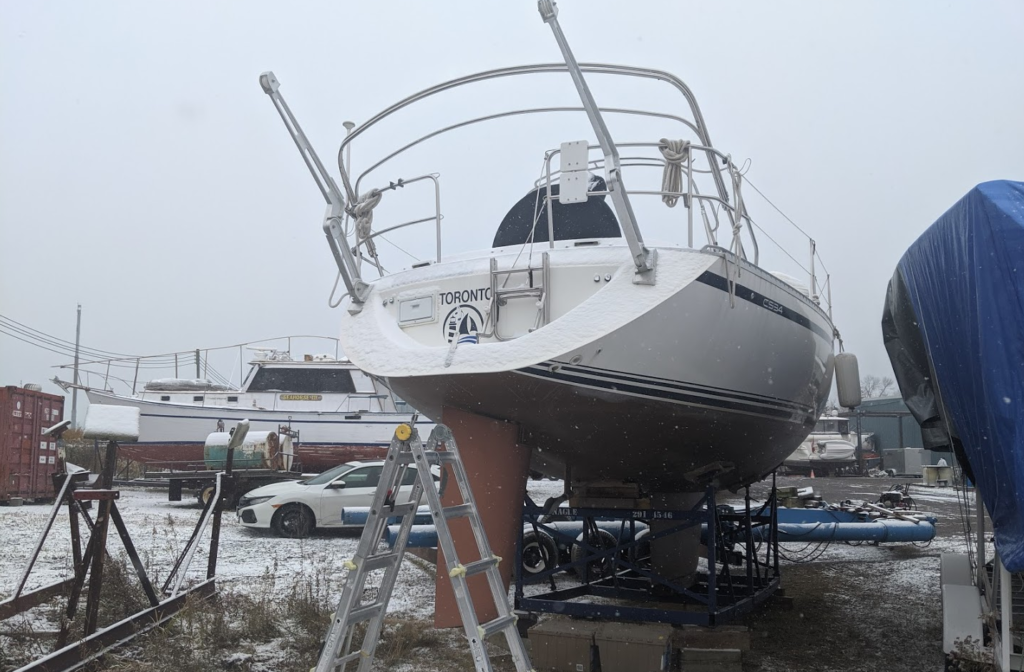
And the bumpers also needed to be removed.
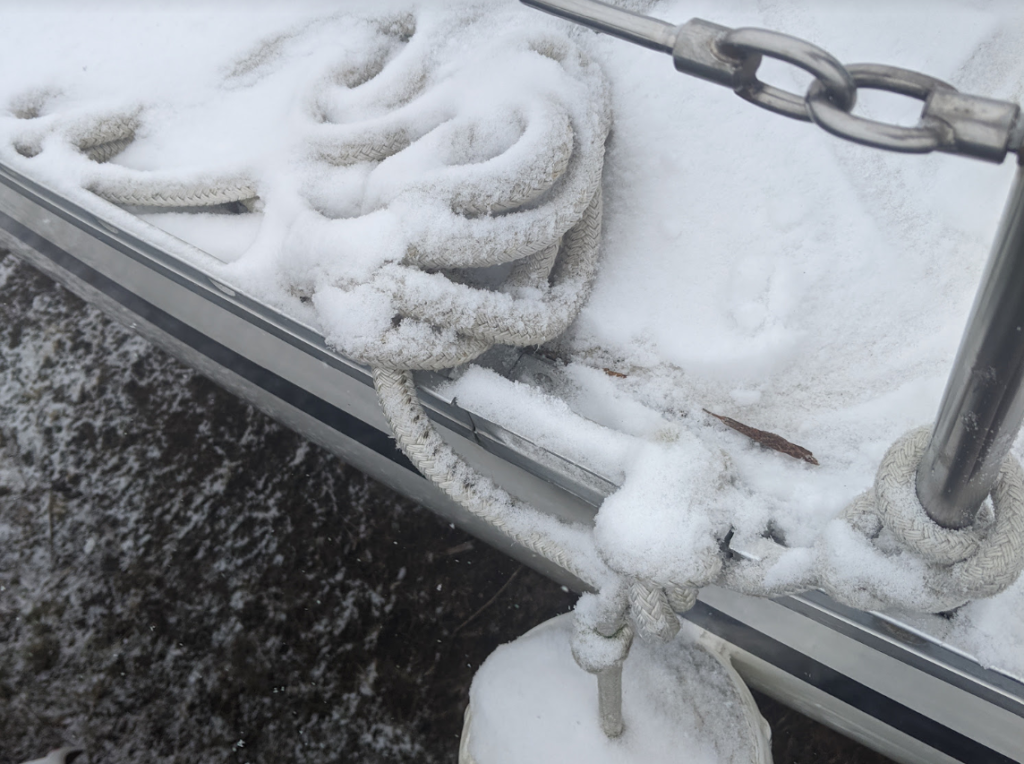
The mast base plate has a small hole for electrical that was letting in a bit of snow. Here’s my re-use of a Kawartha Dairy ice cream bucket to cover it up.
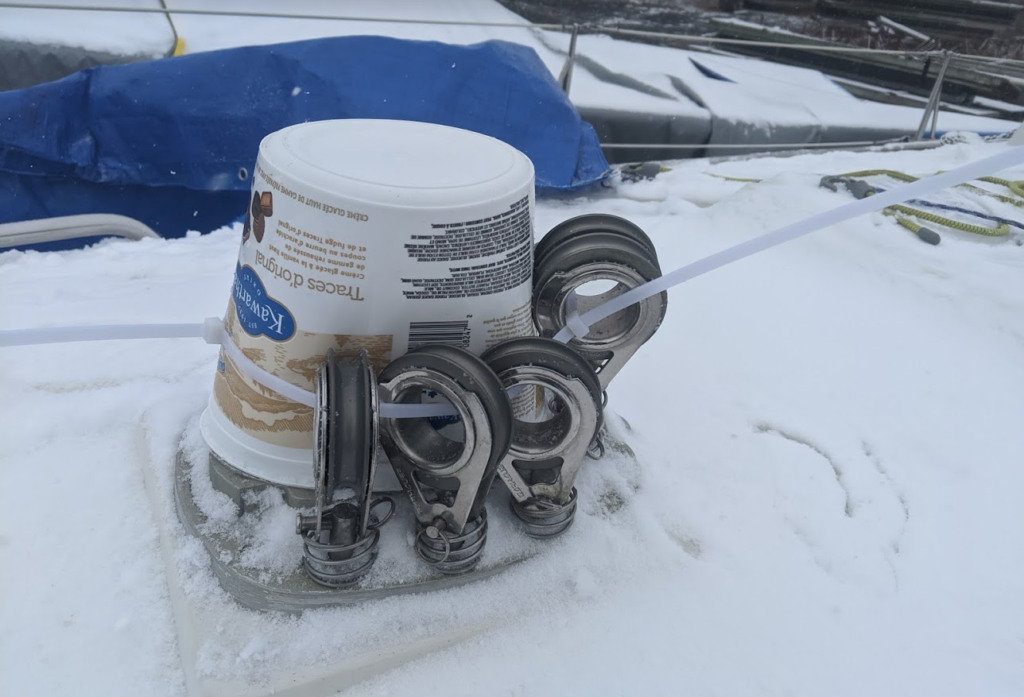
The mast base plate and the top hatch, with the leaky solar vent, are now covered with a tarp. You can see all my foot and hand prints in the snow, trying my best not to slip off.
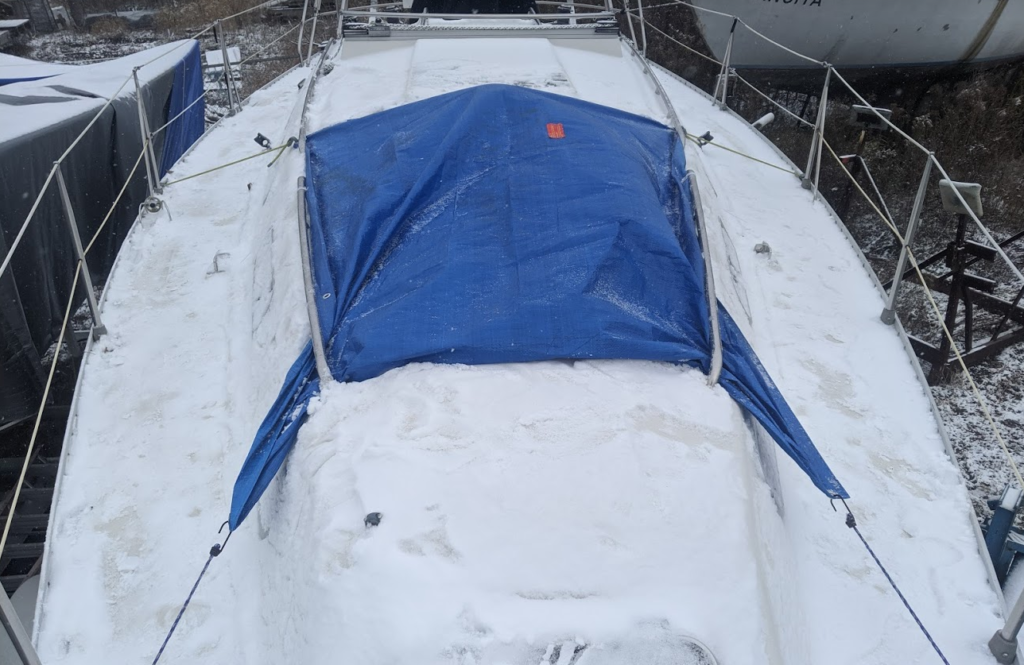
Set up two chemical dehumidifiers and distributed plenty of bounce dryer sheets around the boat. Strange to see snow from inside the boat.
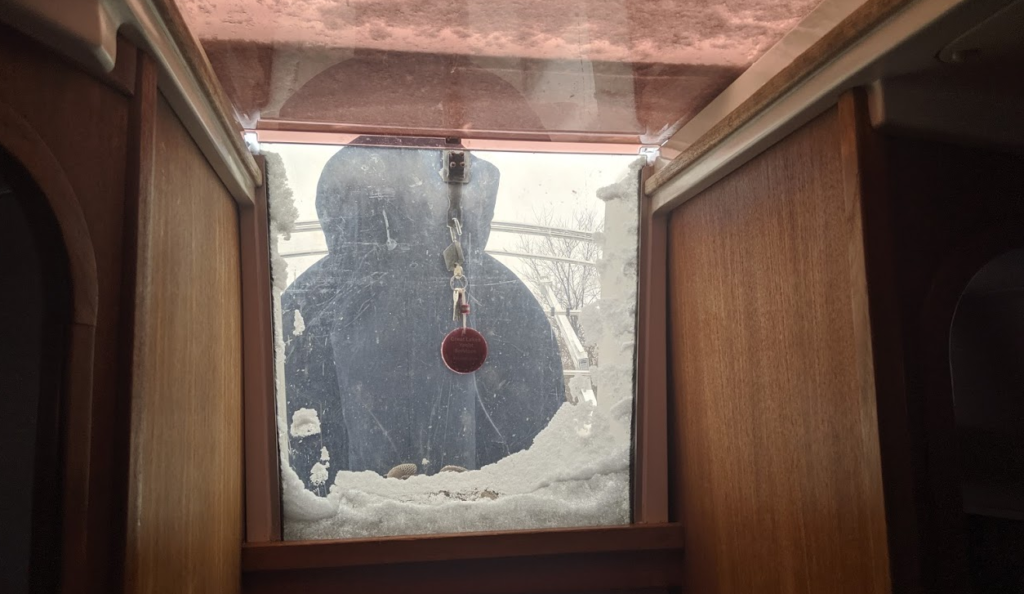
Next I had to go find our mast, this took a bit of time. There are a few areas where masts are stored. Ours is hidden in this picture somewhere, can you find it?
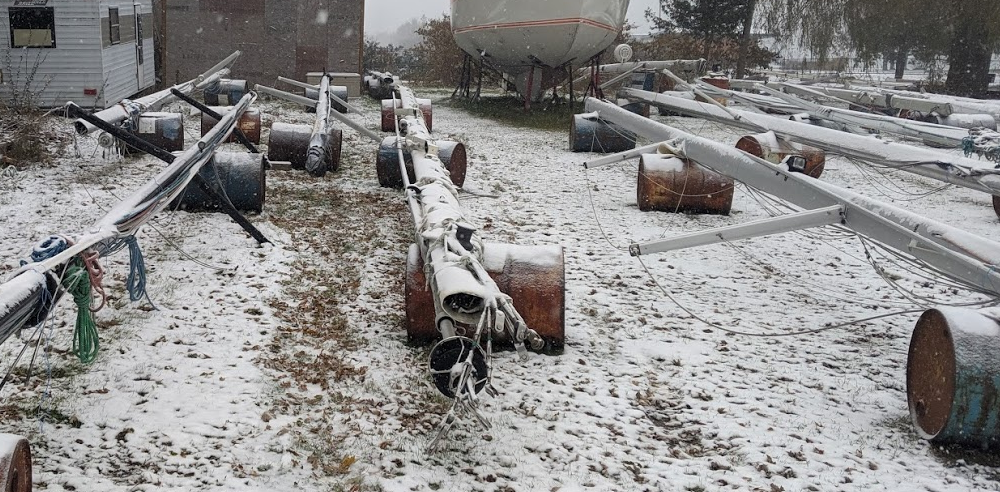
This year I’m trying a different approach. Not sure yet if it’s a good idea or not. I pulled all of the lines from the mast. No tracer lines. Last year when we installed our new lines we found it easier to just use electricians fish tape to feed the lines through. Will see how this goes. I just like that none of our lines are sitting out all winter. If this goes well then next year I think we’ll just pull the lines off the boat the moment we arrive at Wiggers rather than wait until after the mast is stepped.
Also removed our anchor light since we are replacing it this year with an LED version. Please leave a comment if you have any suggestions for a good replacement.
Used saran wrap, garbage bags and duct tape to seal up both ends. That was all I could do for now so headed back home.
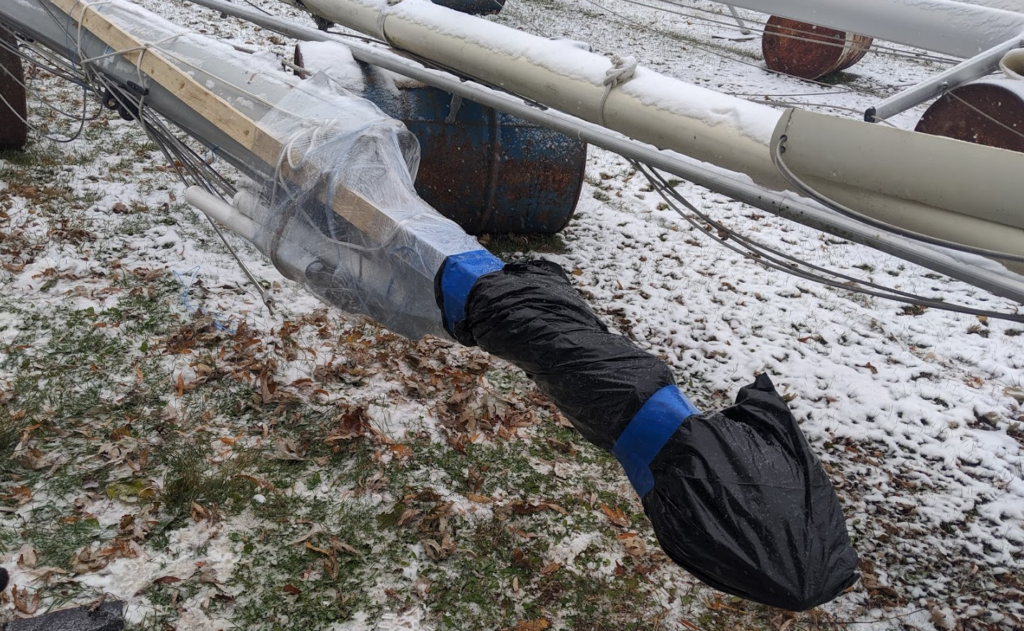
Fixing our canvas winter cover
Last spring when we removed the canvas cover we found the thread was deteriorating. The zippers pulled away from the canvas and we had a few patches that came off over the winter.
We finally pulled out the cover to look at all the areas that needed to be reinforced.
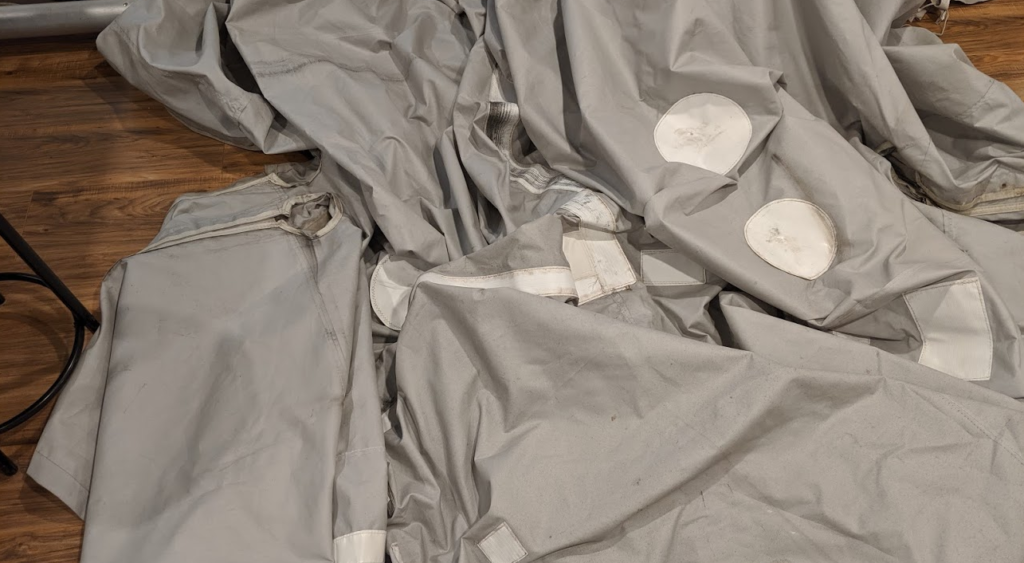
Lori found a heavy duty sewing machine on sale at Costco. I’m sure we will find plenty of boat projects this will help us out with.
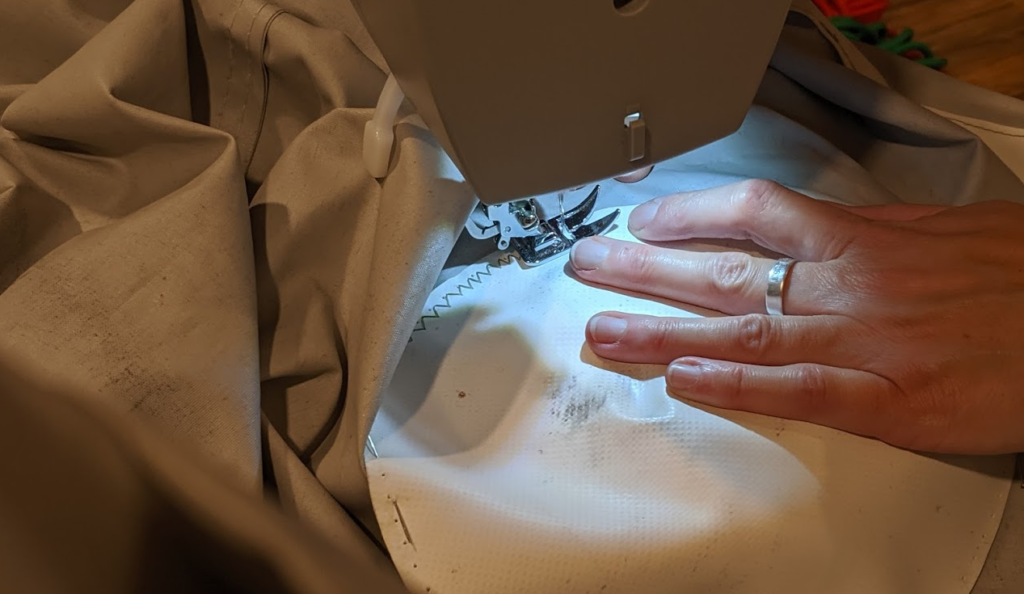
Now the cover is all patched up and reinforced. Just need some nice weather to go and put it on the boat. It’s a relatively easy job. The cover is split into two large pieces that zip together in the middle and it’s all held on by sandbags. Fingers are crossed we see some above freezing weather this week and will have the cover on the boat this weekend!
A few things are left to do:
- Install winter cover
- Batteries are left, unconnected, on the boat. Will remove them when we put the cover on.
- Remove some of the remaining gear off the boat.
More info
Found a great resource by a fellow CS owner. Ed Bottrell has a great site with useful checklists, including a great winterization checklist. It can be found here:
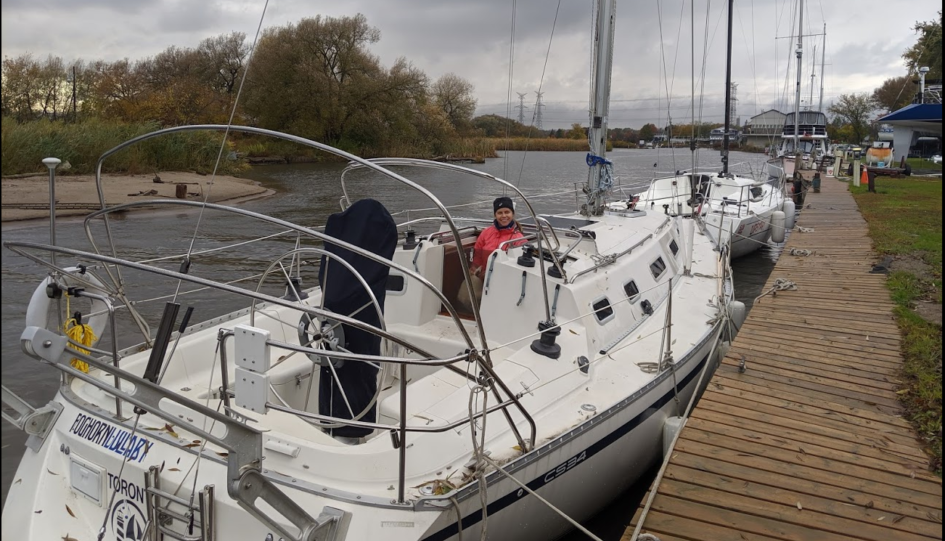
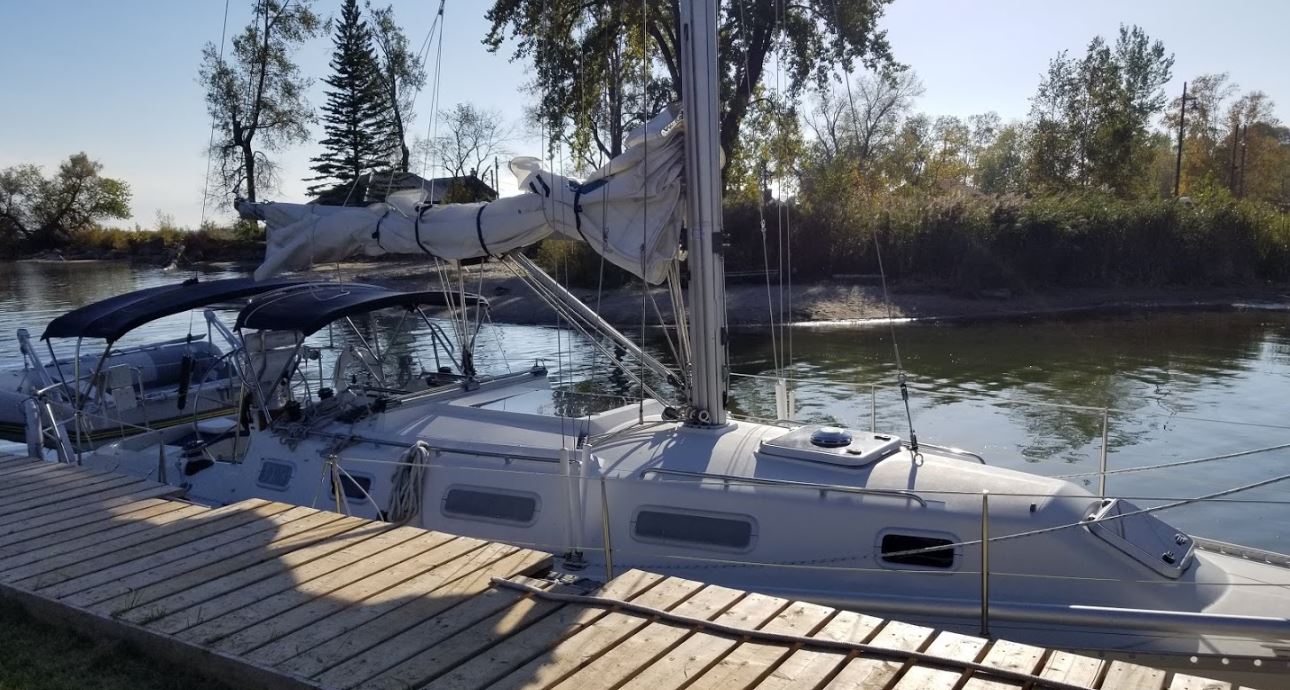
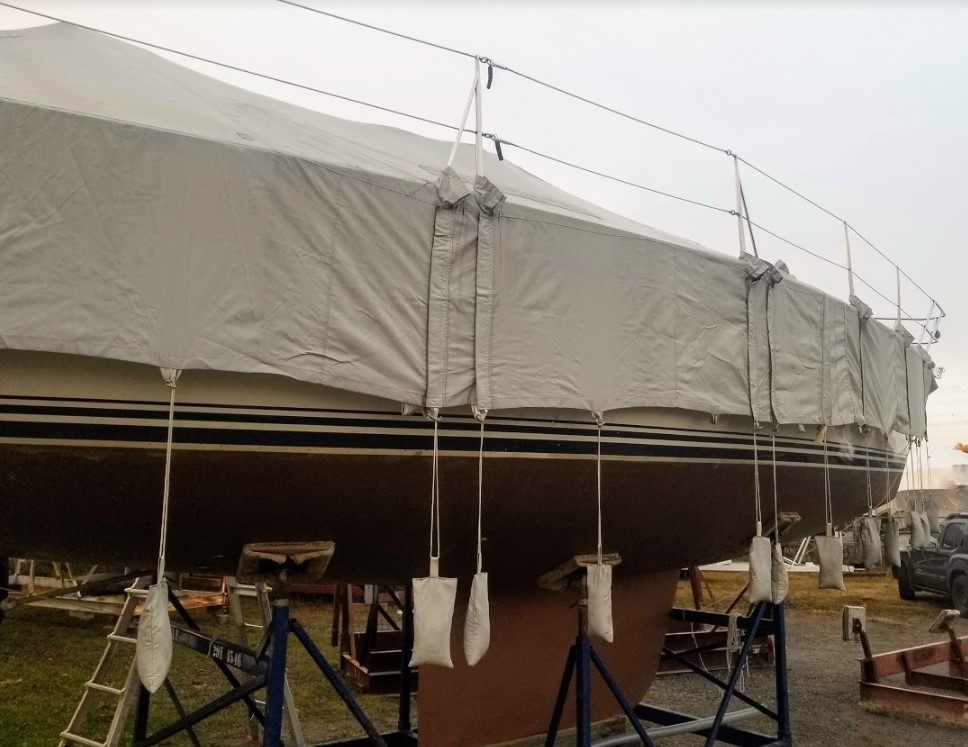
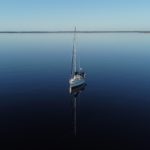
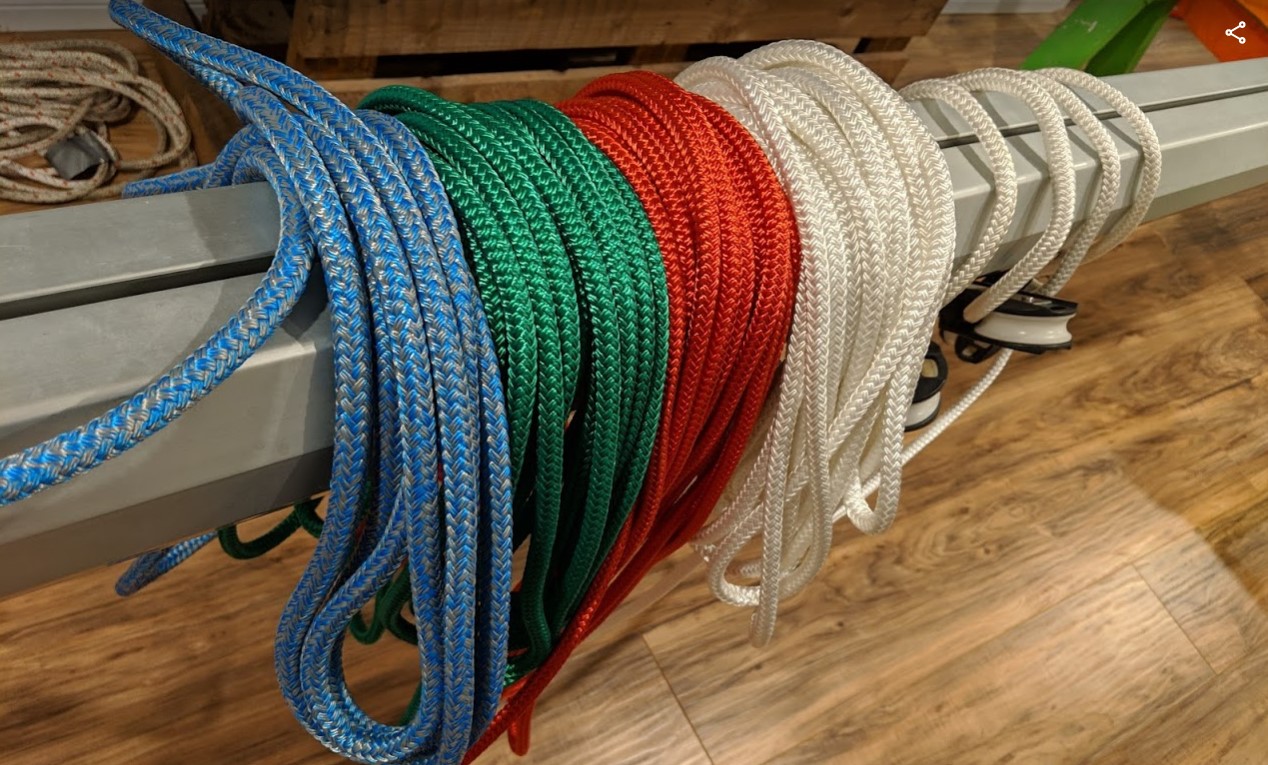
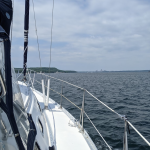
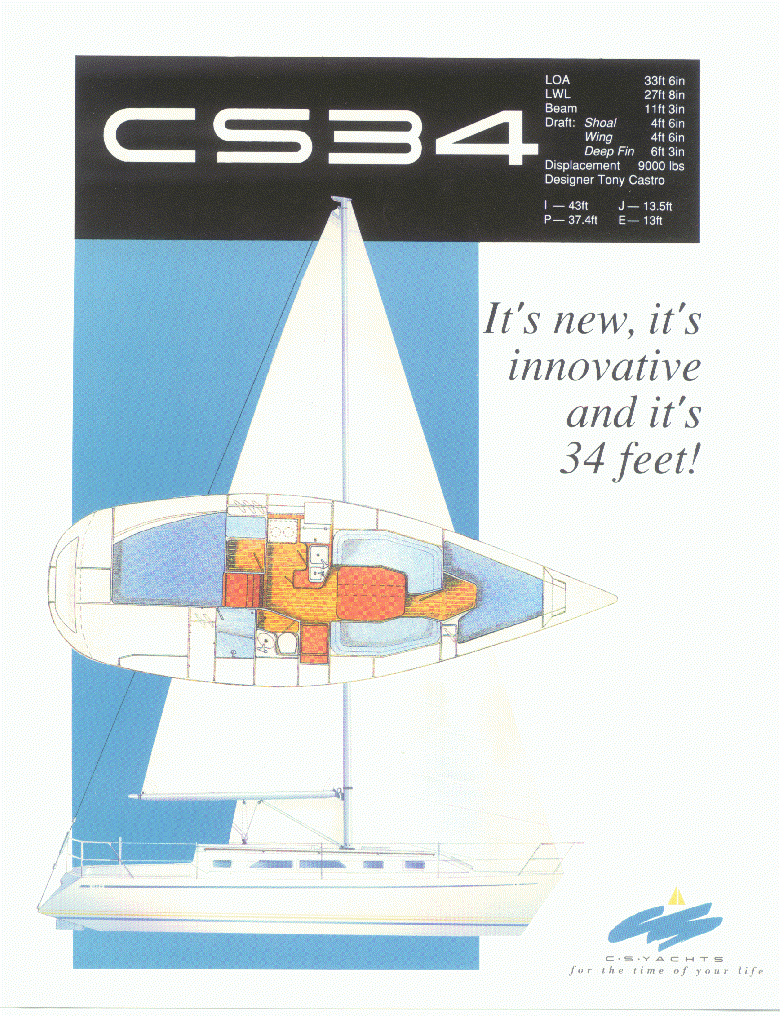
Leave a Reply